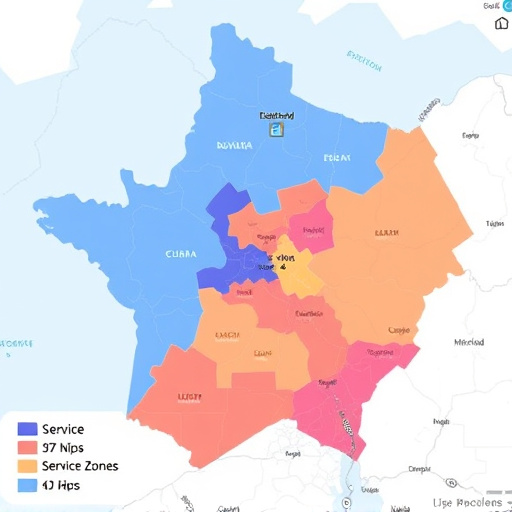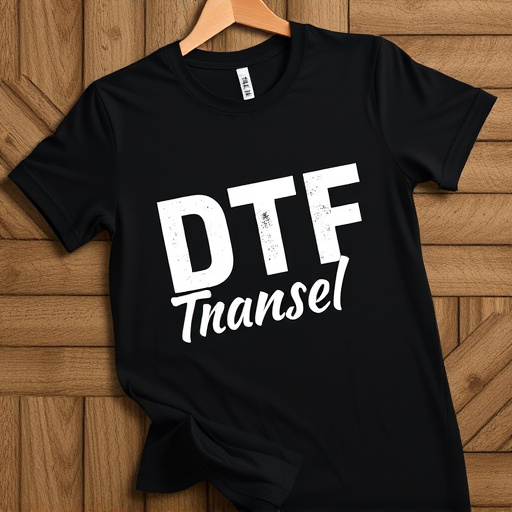Direct-to-film (DTF) transfer technology revolutionizes the textile industry by enabling high-quality, vibrant printing directly onto fabrics without intermediate steps. This game-changer delivers consistent prints that withstand multiple washes, offering a cost-effective and efficient alternative to traditional methods. DTF stands out for its superior durability and color fidelity, particularly after washing, making it ideal for apparel, accessories, and long-term wear products. Key factors ensuring the longevity of DTF prints include high-quality inks, robust media, proper coating, and optimal pressing. To preserve print quality after washing, use cold water, mild detergent, avoid high-temperature washes, and air dry. DTF prints have gained popularity across industries for their vibrancy and durability, with businesses leveraging them for personalized apparel and expanding their services. Future advancements include higher resolutions, eco-friendly inks, and greener printing processes.
Direct-to-film (DTF) print technology is revolutionizing the way we reproduce high-quality images on various materials. This innovative method offers a significant quality advantage over traditional printing techniques, ensuring crisp details and vibrant colors even after multiple washes. In this article, we’ll explore the inner workings of DTF transfer technology, its durability benefits, and practical tips for maintaining print integrity. We’ll also highlight real-world applications and discuss emerging trends shaping the future of DTF printing.
- Understanding Direct-to-Film (DTF) Transfer Technology
- The Quality Advantage of DTF Prints Over Traditional Methods
- Key Components That Ensure Longevity and Durability
- Best Practices for Maintaining DTF Print Quality After Washing
- Real-World Applications: Success Stories of DTF Transfers
- Future Trends and Innovations in DTF Printing
Understanding Direct-to-Film (DTF) Transfer Technology

Direct-to-film (DTF) transfer technology is a cutting-edge method revolutionizing the way we print and apply graphics to various materials, especially in the textile industry. This innovative process allows for high-quality printing directly onto fabrics or other substrates without the need for intermediate steps. With DTF, designs are transferred from a digital file to a film, which is then pressed onto the material using heat and pressure.
The beauty of DTF Transfer lies in its ability to produce vibrant, precise prints that rival traditional methods. This technology ensures consistent quality, allowing multiple washes without fading or loss of detail. It’s a game-changer for businesses looking to create durable, visually appealing products, as it offers a cost-effective and efficient way to achieve professional results.
The Quality Advantage of DTF Prints Over Traditional Methods

Direct-to-film (DTF) printing offers a significant quality advantage over traditional methods, especially when it comes to durability and color fidelity after multiple washes. Unlike conventional techniques that may result in fading or reduced detail over time, DTF transfers are designed to withstand the rigors of everyday use. This advanced technology ensures that vibrant colors and crisp graphics remain intact even after repeated washing, making it an ideal choice for apparel, accessories, and other products intended for long-term wear.
The secret behind DTF’s superior performance lies in its intricate process. It involves printing directly onto a special film using high-resolution techniques, which then serves as a durable carrier for the design. During the wash cycle, the film protects the printed image, preventing dye from bleeding or smudging. Once the wash is complete, the film is carefully removed, leaving behind a vibrant, high-quality print that’s as good as new. This innovation not only enhances product quality but also caters to modern consumers’ demands for long-lasting, visually appealing items.
Key Components That Ensure Longevity and Durability

The longevity and durability of direct-to-film (DTF) prints heavily rely on several key components. Firstly, the quality of the inks used plays a significant role in ensuring that vibrant colors remain intact even after numerous washes. High-performance inks designed specifically for DTF transfers offer superior fastness properties, preventing fading or discoloration. Secondly, the choice of media is crucial; using thick, durable papers or fabrics ensures that the print adheres well and withstand wear and tear.
Additionally, proper coating on the print surface acts as a protective layer, shielding it from moisture and environmental contaminants. This coating not only enhances scratch resistance but also prevents the ink from smudging or running during washing. Furthermore, the pressing process must be optimal to ensure consistent contact between the ink and substrate, leading to even application and long-lasting adhesion.
Best Practices for Maintaining DTF Print Quality After Washing

To maintain the quality of your Direct-to-Film (DTF) prints after washing, start by using cold water and a mild detergent designed for delicate fabrics. Aggressive agitation or high-temperature washes can cause the DTF transfer to crack or fade. Always wash similar colors together to prevent dye bleeding, which can affect the vibrancy of your print.
Avoid using fabric softeners, as they can leave a residue that may damage the DTF layer. Instead, consider air drying your prints to prevent shrinkage and maintain the integrity of the design. If hanging to dry, use sturdy hangers to avoid wrinkles or stretches that could compromise the quality of the print.
Real-World Applications: Success Stories of DTF Transfers

Direct-to-film (DTF) prints have found their place in various industries, offering a unique and high-quality method for transferring images onto fabric. From fashion design to custom t-shirt printing, real-world applications of DTF transfers showcase their durability and versatility. Successful brands and entrepreneurs have harnessed the power of DTF technology, ensuring that their designs maintain vibrancy even after multiple washes.
One notable success story involves a small business specializing in creating personalized apparel for events. By adopting DTF transfers, they could offer clients an extensive range of customization options while maintaining print quality. This method has been particularly useful for creating event-themed merchandise, where the ability to withstand repeated washing is essential. The business’s satisfaction with DTF transfers has led them to expand their services, attracting a wider customer base seeking high-quality, long-lasting prints.
Future Trends and Innovations in DTF Printing

The future of Direct-to-Film (DTF) printing looks bright, with innovations constantly pushing the boundaries of quality and efficiency. As technology advances, we can expect to see smaller, more precise print heads, allowing for even higher resolution and more detailed DTF transfers. This will result in improved color accuracy and a smoother finish on various materials, including cotton, polyester, and even specialized fabrics like neoprene.
Additionally, sustainable practices are likely to play a significant role in the evolution of DTF printing. Researchers and manufacturers are exploring eco-friendly inks and solvents that reduce environmental impact while maintaining print quality. These innovations could lead to more accessible and greener DTF printing solutions, making custom printing an even more viable option for businesses and individuals alike.














